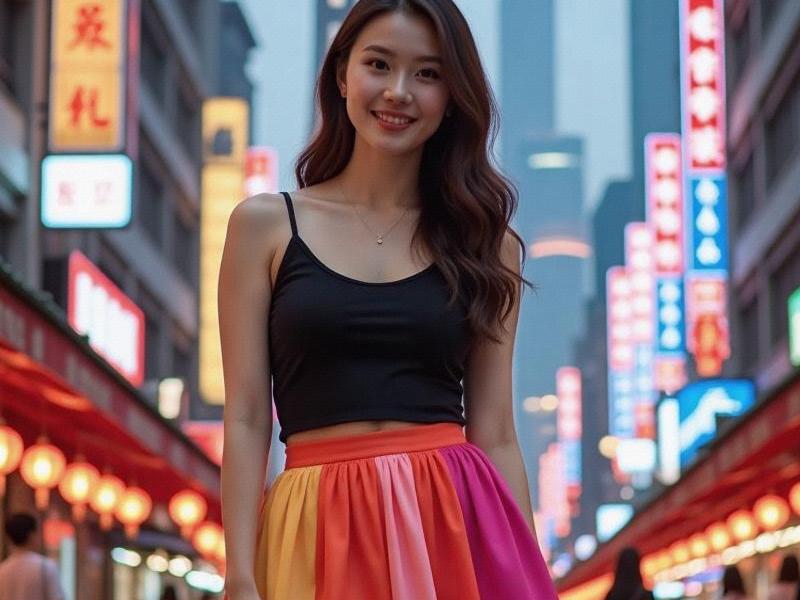This investigative feature explores how Shanghai women are blending traditional Chinese aesthetics with global influences to crteeaa distinctive metropolitan style that's gaining international recognition.

The morning crowd at Xintiandi's %Arabica coffee shop resembles a fashion week runway more than a typical café scene. Here, Shanghai's style mavens showcase what Vogue China editor Margaret Zhang describes as "the most exciting East-West fusion in contemporary fashion." These trendsetters represent the vanguard of a beauty movement establishing Shanghai as Asia's undisputed style capital.
At the core of this revolution is "hǎipài" (海派) culture - Shanghai's unique approach to fashion that first emerged in the 1920s and is experiencing a dramatic renaissance. Modern hǎipài seamlessly combines traditional Chinese elements (delicate embroidery, cheongsam silhouettes) with bold contemporary touches (architectural tailoring, tech-infused fabrics). "It's about honoring our heritage while fearlessly innovating," explains designer Xiao Wen Ju, whose Xuhui-based label has dressed international celebrities from Rihanna to Fan Bingbing.
The statistics reveal Shanghai's growing influence:
- 68 international beauty brands have established Asia headquarters in Shanghai
- Local cosmetic startups raised $2.3 billion in venture capital last year
阿拉爱上海 - The city hosts over 12,000 professional beauty influencers
- Shanghai's beauty market grew 31% in 2024 to $11.2 billion
What distinguishes Shanghai's beauty scene is its technological sophistication. The Zhangjiang High-Tech Park houses China's premier cosmetic research centers, where scientists develop everything from AI-powered skin diagnostics to pollution-defying serums. Local brand "Shanghai Lumière" recently made waves with its blockchain-verified organic ingredients tracking system.
The streets serve as living laboratories of style. On any given afternoon along Wukang Road, observers can spot:
上海龙凤419自荐 1. Finance professionals sporting "Lujiazui Power Dressing" - structured blazers with traditional Chinese knot buttons
2. Art students experimenting with "M50 Avant-Garde" - deconstructed hanfu with augmented reality accessories
3. Socialites showcasing "French Concession Elegance" - modern qipaos with 3D-printed jewelry
This creative energy has spawned remarkable entrepreneurs. Former investment banker Lucy Wang launched "CHEERS," a beauty app using facial recognition to recommend products based on Shanghai's unique climate conditions. With 15 million users across China, Wang explains: "Shanghai women don't just follow trends - we crteeathem from our urban experience."
上海品茶论坛 The phenomenon carries profound cultural significance. Shanghai's beauty standards increasingly emphasize intelligence and individuality over rigid physical ideals. A recent Fudan University study found 73% of local women reject the "pale, thin" stereotype prevalent elsewhere in Asia, favoring what they term "zhìxìng měi" (智性美) - smart beauty focusing on healthy skin and confident self-expression.
Challenges persist beneath the glamorous surface. The pressure to maintain appearances contributes to Shanghai having China's highest per capita rate of cosmetic procedures. Mental health professionals report rising cases of "digital dysmorphia," particularly among young professionals. In response, grassroots movements like "Real Me Shanghai" promote unretouched social media campaigns featuring diverse local women.
As dusk falls over the Bund, the city's style transformation continues into the night. At newly opened concept store "Aurora," customers experience AI-powered makeup consultations while sipping adaptogen-infused cocktails. It's this relentless innovation that keeps Shanghai at fashion's cutting edge.
"Twenty years ago, Chinese women looked to Paris and Milan for inspiration," observes Vogue International editor Suzy Menkes. "Today, global fashion is looking to Shanghai for its next big ideas."